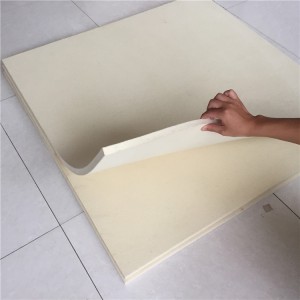In the construction industry, where sustainability and energy efficiency are becoming increasingly important, wool felt strips are emerging as a revolutionary building material. Their unique properties, including thermal insulation, sound absorption, and environmental friendliness, make them a promising alternative to traditional construction materials.
One of the primary applications of wool felt strips in construction is as an insulation material. Traditional insulation materials, such as fiberglass and foam, often have negative environmental impacts, including the release of harmful chemicals during production and disposal. Wool felt strips, on the other hand, are a natural and renewable resource. Their dense fiber structure provides excellent thermal insulation, helping to reduce heat transfer in buildings. This not only improves the energy efficiency of buildings but also reduces heating and cooling costs for homeowners and businesses. In addition, wool felt’s ability to regulate humidity can help prevent the growth of mold and mildew, creating a healthier indoor environment.
Wool felt strips are also highly effective at absorbing sound, making them an ideal choice for soundproofing applications in buildings. Whether it’s reducing noise from traffic, neighbors, or internal building systems, wool felt can significantly improve the acoustic performance of a space. Architects and builders are using wool felt strips to line walls, ceilings, and floors in recording studios, theaters, offices, and residential buildings. The soft texture of the felt also adds a touch of warmth and comfort to the interior design of a space.
In addition to insulation and soundproofing, wool felt strips can be used in other aspects of construction, such as roofing and waterproofing. Wool felt has natural water – repellent properties, making it suitable for use as a roofing underlayment or as a waterproofing membrane. Its durability and resistance to weathering ensure that it can withstand the elements over time, providing long – term protection for buildings.
The use of wool felt strips in construction also aligns with the principles of sustainable building. As a biodegradable material, wool felt does not contribute to the growing problem of construction waste. At the end of a building’s life cycle, the wool felt strips can be recycled or composted, reducing the environmental impact. Moreover, the production of wool felt requires less energy compared to many synthetic building materials, further enhancing its sustainability credentials.
As the construction industry continues to embrace sustainable building practices, the demand for innovative materials like wool felt strips is expected to rise. With ongoing research and development, we can anticipate even more creative and practical applications of wool felt strips in construction, helping to build a more sustainable and environmentally friendly future for the built environment.

Post time: Jun-04-2025
